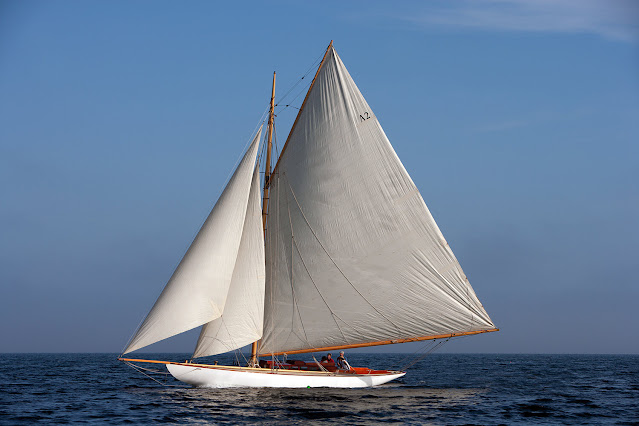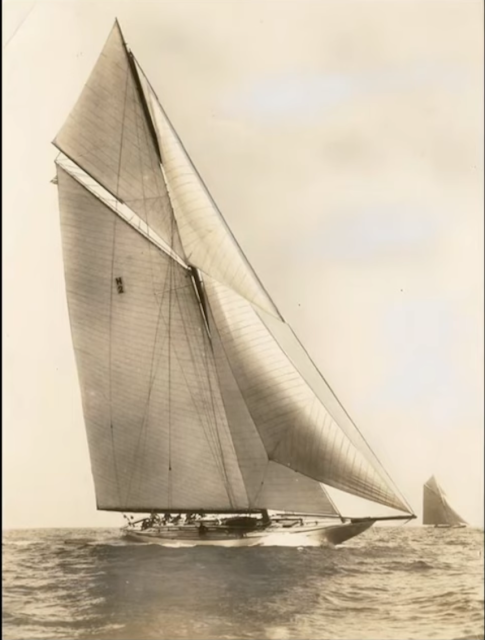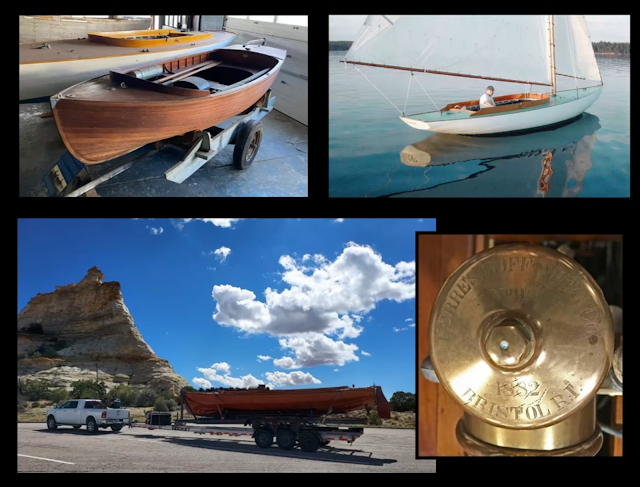Happy Veteran's day
and happy 248th birthday to my fellow US MarinesSemper Fidelis
Image by my daughter 💕
#semperfi #veterans #veteransday #usmc #military
Embedded Systems Firmware Base Software for ARM architecture
Dlaczego informatyk miałby być zainteresowany nauką kaligrafii?
https://medium.com/@ukidlucas/
Wyobraź sobie, że siedzisz na spotkaniu.
Po drugiej stronie biurka siedzi wice-prezydent twojego klienta.
Wice-prezydent wyjaśnia problemy swojej firmy.
Twarze dyrektorów, rozsianych po sali, wskazują na szereg emocji, począwszy od:
- „Nie jestem pewien, po co nam ten zespół konsultantów”,
do wyzywającego
- „Nie dbam, nie będę zawracać sobie głowy!”.
Ty i kilku twoich współpracowników pilnie piszecie notatki.
Co sobie wyobraziłeś?
Prawdopodobnie laptopy otwarte się z ekranem oddzielającym przestrzeń i klik, klik, klik – stukanie palców na klawiaturze.
Nie w mojej drużynie!
Kierując zespołami technologicznymi od paru-kilkudziesięciu lat, zawsze uczę moich współpracowników, aby zostawiali laptopy w torbach i wyjmowali żółty notatnik oraz długopis – a najlepiej pióro wieczne.
Żółty?!? To dlatego, że ten kolor wywołuje określone reakcje psychologiczne, ale ten artykuł nie jest o kolorach.
Nie chcesz, aby ten dyrektor zastanawiał się, co piszesz, lub czy w ogóle zwracasz uwagę.
Nie chcesz żadnych barier między wami.
Potrzebujesz wyraźnie widocznych i schludnych notatek, które reprezentują jasność umysłu.
Przewiń do współczesności.
Nadal robię mnóstwo pisemnych notatek, i przez cały czas wypróbowałem niezliczone aplikacje do przekształcanie ręcznego no komputer, bez większych rezultatów.
Ostatnio w restauracji użyłem funkcji „obiektywu” aparatu w telefonie Google do zeskanowania drukowanego, ale kursywą pisma. 100% sukces! Nagle zdałem sobie sprawę, że to moje własne pismo z ósmej klasy nie było wystarczająco wyraźne. Poszedłem na misję, aby to poprawić.
Zrobiłem przegląd powszechnie nauczanych technik pisania, szukając równowagi między szybkością, łatwością i czytelnością.
Z jakiegoś powodu zacząłem od średniowiecznej kursywy, która jest naprawdę schludną, ale powolną.
Spojrzałem na Spencerian, który ma być szybki i łatwy, ale było w nim coś co pachniało podstawówką, choć już nie uczą kaligrafii w szkołach.
Następnie obejrzałem serię filmów na YouTube, które doprowadziły mnie do Deklaracji Niepodległości, która została napisana w wariancie pisma o nazwie Copperplate (miedzioryt).
Nazywa się to miedziorytem z dwóch powodów, po pierwsze dlatego, że kaligrafia została wygrawerowana na miedzianych płytach używanych w procesie drukowania. Grawerowanie wykonano dłutami, które w naturalny sposób promowały długie ozdobne łuki.
Drugim powodem jest to, że absolutnie nie mogliśmy przyznać, że nasz dokument założycielski został napisany w "Angielskim" Roundhand (zaokrąglone pismo), jak go nazywano od co najmniej 1734 roku, kiedy zostało skatalogowane w druku.
Uważam, że English Roundhand (Copperplate) jest niezwykle stylowy, piękny, szybki i czytelny.
Algorytmy Google nie mają absolutnie żadnego problemu z odczytaniem tego, ponieważ Brytyjczycy mieli zwyczaj rejestrowania absolutnie wszystkiego za pomocą Roundhand przez co najmniej 400 lat.
Business Roundhand (ofisowe pismo), z uproszczonymi, zdrowo-rozsądkowymi znakami, jest dla mnie najbardziej atrakcyjne w codziennym robieniu notatek.
Ale to jest dalekie od końca tej historii, w rzeczywistości to dopiero początek.
Kilka weekendów temu postanowiłam uporządkować pudełka z moimi notatkami. Natknąłem się na mnóstwo listów z początku lat 90. Listy były datowane prawie codziennie! Czytanie ich było przyjemne, ponieważ pochodziły od moich dobrych przyjaciół, których zostawiłem w Europie, kiedy przeprowadziłem się do Stanów Zjednoczonych.
Zauważyłem również, że listy nagle się zatrzymały około 1997 roku, czyli mniej więcej wtedy, gdy zacząłem korzystać z poczty elektronicznej i mediów społecznościowych.
Problem w tym, że nie mam żadnego zapisu korespondencji przez co najmniej następne 15 lat! Miałem je wszystkie… BBS, ICQ, AOL, Yahoo!, MSN, Friendster, Skype i MySpace. a to tylko tyle co pamiętam. Facebook jeszcze żyje, ale jest mniej popularny wśród młodzieży.
Z drugiej strony dobrze napisane listy nie są czymś, co ludzie wyrzucają. W moim przypadku przetrwały 30 lat, wyglądając jak nowe, i mogą przetrwać znacznie dłużej, wystarczy przeczytać Jane Austen, 1817, w Projekcie Gutenberga.
W rzeczywistości w okresie renesansu ludzie codziennie pisali i otrzymywali listy. Rodzina, przyjaciele i naukowcy wszyscy pisali i większość z tego zachowała się do dnia dzisiejszego.
Zadałem sobie pytanie, jakie dziedzictwo otrzymają nasze następne pokolenia? Dostaną opublikowane książki, o tych osobach, które były opisane. O nas samych nic. Smutno.
Moje i ich dzieci mogą pamiętać, że byłem inżynierem, który próbował sprawić, by samochody jeździły same. Ale co z moimi uczuciami, co z moimi niezliczonymi, szalonymi zainteresowaniami? Nic nie byłoby.
Wiec dlaczego mielibyśmy wracać do wiecznego pióra na ozdobnym papierze? Po prostu wydrukuj e-maile lub czaty, a będziesz mieć to samo. No, nie do końca.
„Ily” (I love you), „xo xo” (uściski i całusy) itp.,
nie są zbyt dobrym substytutem dobrego listu lub wiersza.
Wspomniałem o renesansie, chciałbym podzielić się cytatem, który znalazłem podczas poszukiwania tematu…
„Renesans musiał być niewygodnym, choć niezwykle ekscytującym okresem do życia.
Jednak właśnie te napięcia wywołały wylew twórczej energii, jakiego świat nigdy wcześniej nie doświadczył.
Zasadniczym paradoksem jest to, że chęć powrotu do klasyki opartej na odrzuceniu średniowiecza przyniosła nowej epoce nie odrodzenie starożytności, ale narodziny współczesnego człowieka”
"Historia sztuki. Część III. Renesans". HH Janson 1968
Ten cytat jest poruszający.
Powolny, przemyślany proces pisania piórem jest kreatywny i przy pewnym wysiłku także piękny. Ręczne pisanie pierwszej i drugiej wersji roboczej czyni cuda dla Twojej pamięci. Pisanie listów do przyjaciół i współpracowników pozostawia trwały ślad.
Zapytałem już kilku znajomych: „Czy mogę do ciebie napisać?”
Jestem gotów spróbować i mam nadzieję, że ty też to zrobisz.
Prześlij mi swoje przemyślenia na LinkedIn, link poniżej
https://www.linkedin.com/in/ukidlucas/
lub dobrą, staroświecką pocztą.
To drugie docenię znacznie bardziej!
Z szacunkiem,
Uki D. Lucas
Reading scientific pages on Kindle
https://en.wikipedia.org/wiki/Spherical_coordinate_system
Pretty much every tool I have tried does convert HTML but fails to convert the math,
in-line LaTEX math seems to work fine,
but the vector-graphic .svg does not:
Here is a list of tools I have tried:
WebToEpub Chrome extension
- Shows tables nicely
- shows images nicely
- converts LaTEX math YES
- SVG NO, shows them as "?", it might be the viewer's problem, I tried a few
- Calibre E-book viewer
- Kindle 7-inch 2022
- Apple Books
- Apple Preview - does not open ePub
EpubPress
- Creates a table of Contents with each Web page included, useless if converting a single page
- fails to convert table borders
- converts LaTEX fine
- drops (does not display) the Vector Graphics (.svg)
dotEpub
- in the non-immerse mode, you can view the first few images only
- results in an error on Apple books
- fails to convert table borders
- converts LaTEX math YES
- on Kindle: SPELLS OUT the SVG formula, not good.
- in Calibre E-book viewer shows SVG nicely!
Summary
- Use print-to-PDF and view it in MacOS Preview on a big screen
- If you read a long MATH and NO-image page, use dotEpub and read in the Calibre E-book viewer
- If you want images, but you do not care for SVG math, WebTOEpub is best.
47-foot Buzzards Bay 30 yacht by Herreshoff
The Aria, HMCo. #566 is a 47-foot Buzzards Bay 30 yacht built in 1902 by the Herreshoff Manufacturing Company of Bristol, Rhode Island.
The Beverly, Massachusetts Yacht Club ordered the yachts, which were raced as a class.
The Buzzards Bay 30 class was built to the exact specifications, allowing owners to race in evenly matched boats.
Credits:
Herreshoff
Laminated hardwood boat stem
A great example of how to go from the design drawing to the lofting table, to a holding rig to the strong and accurate boat stem in 24 hours. Great explanation!
Strip-planking and fairing wooden sailboat
CUDA GPU Concurrent (parallel) Programming
- threads
- queues
- other concurrent programming techniques
- CUDA
- OpenCL
- Metal
- OpenAcc
- PyCUDA
- jCuda
- AMD
- Apple
- FPGA
- multi-core CPUs
Pitfalls of Concurrent Programming
- race conditions
- the expected order of thread operations is not followed
- resource contention
- two or more threads attempt to modify the same memory
- deadlock
- one or more processes are blocked by waiting for a resource
- live locks
- two or more processes are stuck in a loop, but cannot finish while waiting for resources
- resource over-utilization
- too few or too many threads, context switching
- memory required is too large
- memory changes too often
- resource under-utilization
- sitting idle
Semaphore, for all intents and purposes, is an atomic variable that has more than one thread requiring it, which means that a predefined number of threads can use the semaphore to enter a critical section of code.
Concurrent Programming Algorithms
- Dining Philosophers
- multiple processes require the same resources to complete their jobs
- Producer-Consumer
- consumers need to read the data
- in order
- no duplication
- Producers add data in order it needs to be processed
- Sleeping Barber
- customers are waiting
- single barber
- if the barber is sleeping customer should wake him
- If there is no space in the queue, customers are not added
- Data and Code Synchronization
References
FPGA
FPGA = Field Programmable Field Arrays
FPGA is not DSP processor, but add flexibility
ASIC = Application Specific Integrated Circuit
FPGA is used for designing microchip ASIC (i.e. DSP, CPU, TPU)
Please see the video: https://www.youtube.com/watch?v=EVy4KEj9kZg&
The Augustus De Morgan law states that
All digital logic design is created by using..
- AND gate
- OR gate
- NOT inverter
Image from Intel Technology: Architecture All Access: Modern FPGA Architecture
What is a clock?
What is a Flip Flop?
What is LUT?
What is ALM?
which are composed of Adaptive LUT, Full Adders, and DFF.
What is Programmable Routing & Interconnect?
Which programming languages do we use for FPGA?
- Data Parallel C++ using oneAPI
- VHDL
- Verilog
How to Begin a Simple FPGA Design
https://www.youtube.com/watch?v=bwoyQ_RnaiA
Topics to describe in the future
- Oscillator
- Integrator (scaled accumulator)
- low-pass filters
- LSB
- comb filters
- highly modified FIR filter
- self-contained and can work in isolation
- CIC FIlter
- IIR Filter
- Elliptic filter
- Chebyshev Type II filter
- Bessel filter
- Butterworth filter
- Parallel BiQuad IIR FIlter
- TDM Time Division Multiplexing
- Mac filters
- transpose filters
- Fast Furrier Transform FFT
- Jean Baptiste Fourier 1807
- any period signal could be made by adding together a series of pure tones
- square ~= sine() + 1/3 + 1/5 + 1/7 + ...
- ping-pong buffers
- write to one while processing another one
- uses twice as much memory
- Windowing
- FFT, recall DFT
- Single Cycle Butterfly
- RADIX-2 or RADIX-4 butterfly
- In datapath
- Each pixel/point delayed by X lines
- Frame buffers
- Line buffers
- filter operations
- Camera pipeline
- image sensor
- image processing
- video processing
- compression
- I/O
- Stored Image - no delays
- Interlaced
- Progressive
- SD 4:3 720x480i (interlaced)
- SD 16:9 960x480p (progressive)
- HD 720p 1280x720p 60fps
- HD 1920x1080p
- YUV - color video on black and white display
- OSD on-screen display
- PIP picture-in-picture
- VDMA - video-specialized version of DMA
- AXI interface in Xilings
- Motion Adaptive Noise Reduction (MANR)
- Xilinx FPGA has hardware acceleration for Object Segmentation for video, but it might be used for range image
- Defective Pixel Correction
- edge-adaptive image correction (not perfect)
- pixel adaptive,
- color correction
- D65 - daylight
- 3x3 matrix correction
- gamma correction
- non-linear image brightness
- LUT
- better contrast
- lens control
- focus
- auto-focus
- passive, looks for edges
- active, emits IR signal to gauge distance in the center of the lense
- auto-exposure
- auto-white balance
IR vision
- MFNet
- RTFNet
- PST900: dual-stream (RGB and IR) method
Aikido, terminology and etiquette
Aikido 合気道
Uki 宇氣
うき
My favorite quotations..
“A man should be able to change a diaper, plan an invasion, butcher a hog, conn a ship, design a building, write a sonnet, balance accounts, build a wall, set a bone, comfort the dying, take orders, give orders, cooperate, act alone, solve equations, analyze a new problem, pitch manure, program a computer, cook a tasty meal, fight efficiently, die gallantly. Specialization is for insects.” by Robert A. Heinlein
"We are but habits and memories we chose to carry along." ~ Uki D. Lucas
Recommended pages
Popular Recent Articles
-
I live in a very rugged Pacific Northwest (PNW). The terrain consists of sharp rocks in summer and wet or snow-covered sharp rocks in winte...
-
On my blog, I have noticed a very unsettling statistic , which prompted a fascinating question about AI and the future of blogs and maybe ...
-
All images and videos were taken by Uki, the author. At this point, I could only export raw movie footage from today's dive. In the fut...
-
After four meetings in a row, I had the need to get out of the office and go to Redmond French Cafe . The “Croque Madame” plate is not the b...
-
My friends frequently ask me about how I manage my time. The answer boils down to habits. Before discussing habits, I would like to talk abo...
-
I have been wearing wool products for a very long time now. The highlanders of the region where I was born were wearing wool in winter and ...
-
See the photo below. When I was posting my previous article on X.co (Twitter) I was literally following a post of Elon Musk. I thought it wa...
-
You know when you live in the right town when, on a single walk, you have to cross under a fallen tree and chase a coyote out of your path. ...
-
This slingshot shot took a lot of practice , but she had fun and became very consistent . Buy it on Amazon: Item Name Author Producer Amaz...
-
Only 9 years ago - 500,000 downloads - 2303 reviews Not too shabby. Today - couldn't log in Please SUBSCRIBE: https://ukidlucas.beehiiv...


































